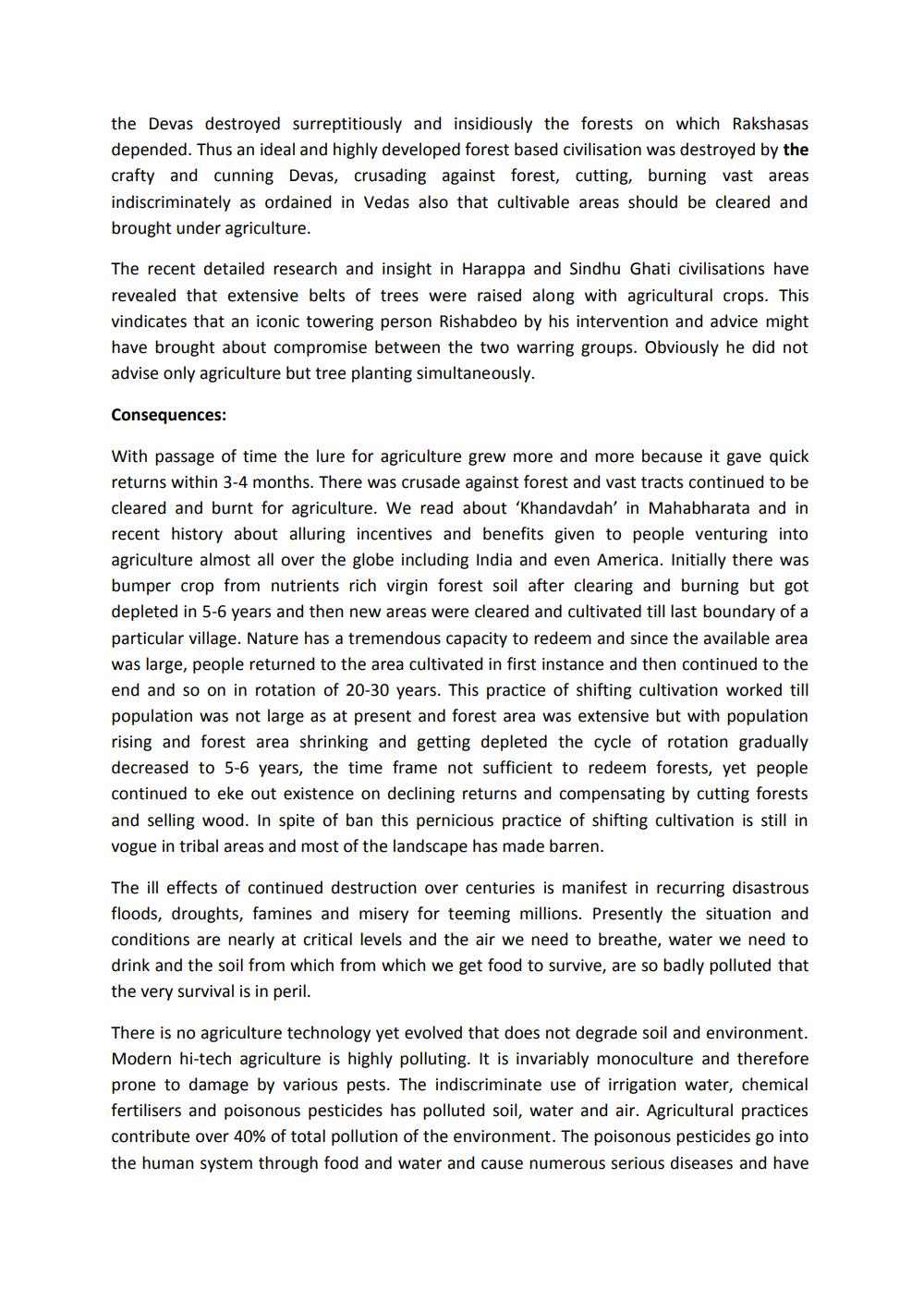Book Title: Kalpavrikshas The Benevolent Trees Author(s): Publisher: ZZZ Unknown View full book textPage 7
________________ the Devas destroyed surreptitiously and insidiously the forests on which Rakshasas depended. Thus an ideal and highly developed forest based civilisation was destroyed by the crafty and cunning Devas, crusading against forest, cutting, burning vast areas indiscriminately as ordained in Vedas also that cultivable areas should be cleared and brought under agriculture. The recent detailed research and insight in Harappa and Sindhu Ghati civilisations have revealed that extensive belts of trees were raised along with agricultural crops. This vindicates that an iconic towering person Rishabdeo by his intervention and advice might have brought about compromise between the two warring groups. Obviously he did not advise only agriculture but tree planting simultaneously. Consequences: With passage of time the lure for agriculture grew more and more because it gave quick returns within 3-4 months. There was crusade against forest and vast tracts continued to be cleared and burnt for agriculture. We read about 'Khandavdah' in Mahabharata and in recent history about alluring incentives and benefits given to people venturing into agriculture almost all over the globe including India and even America. Initially there was bumper crop from nutrients rich virgin forest soil after clearing and burning but got depleted in 5-6 years and then new areas were cleared and cultivated till last boundary of a particular village. Nature has a tremendous capacity to redeem and since the available area was large, people returned to the area cultivated in first instance and then continued to the end and so on in rotation of 20-30 years. This practice of shifting cultivation worked till population was not large as at present and forest area was extensive but with population rising and forest area shrinking and getting depleted the cycle of rotation gradually decreased to 5-6 years, the time frame not sufficient to redeem forests, yet people continued to eke out existence on declining returns and compensating by cutting forests and selling wood. In spite of ban this pernicious practice of shifting cultivation is still in vogue in tribal areas and most of the landscape has made barren. The ill effects of continued destruction over centuries is manifest in recurring disastrous floods, droughts, famines and misery for teeming millions. Presently the situation and conditions are nearly at critical levels and the air we need to breathe, water we need to drink and the soil from which from which we get food to survive, are so badly polluted that the very survival is in peril. There is no agriculture technology yet evolved that does not degrade soil and environment. Modern hi-tech agriculture is highly polluting. It is invariably monoculture and therefore prone to damage by various pests. The indiscriminate use of irrigation water, chemical fertilisers and poisonous pesticides has polluted soil, water and air. Agricultural practices contribute over 40% of total pollution of the environment. The poisonous pesticides go into the human system through food and water and cause numerous serious diseases and havePage Navigation
1 ... 5 6 7 8 9
